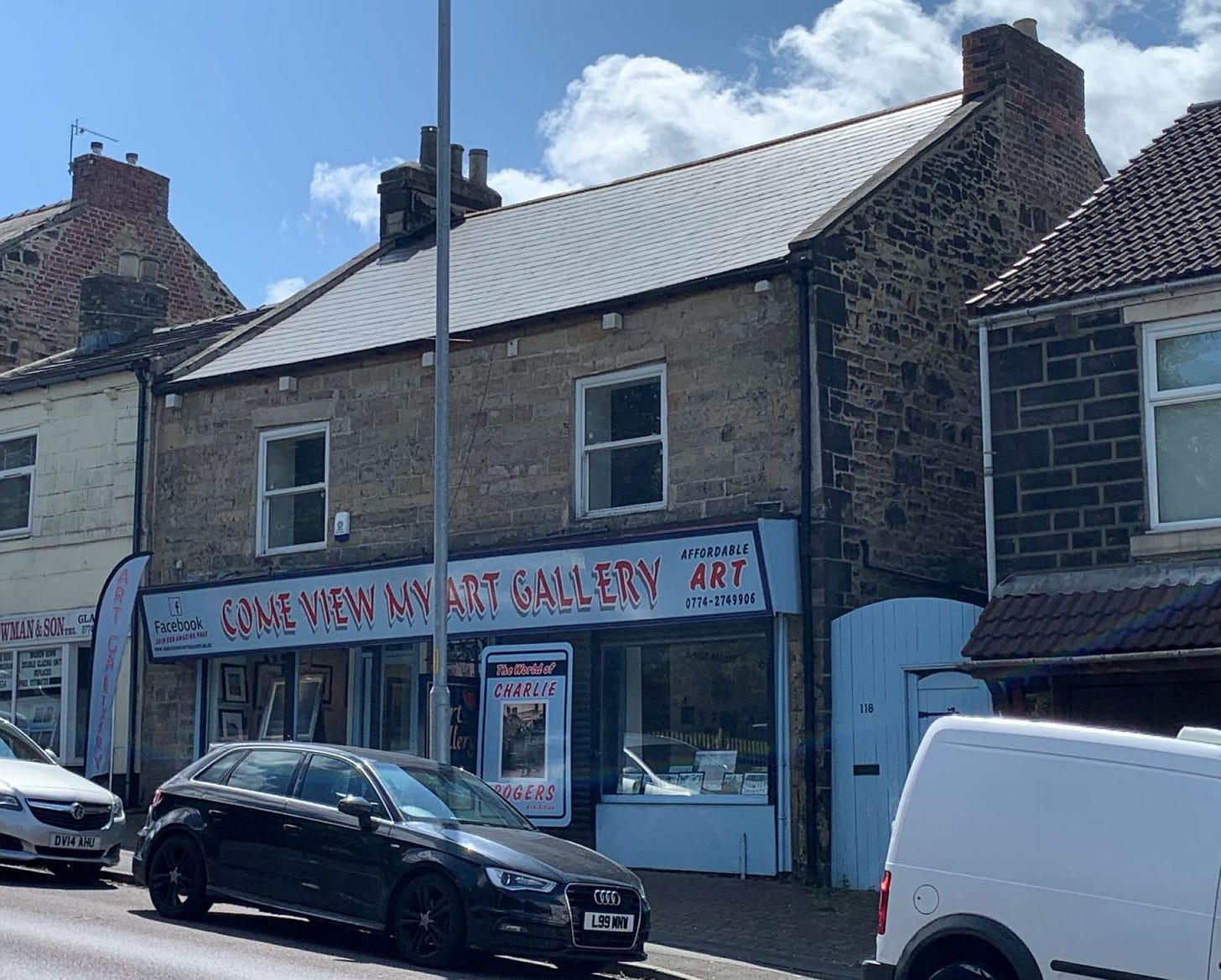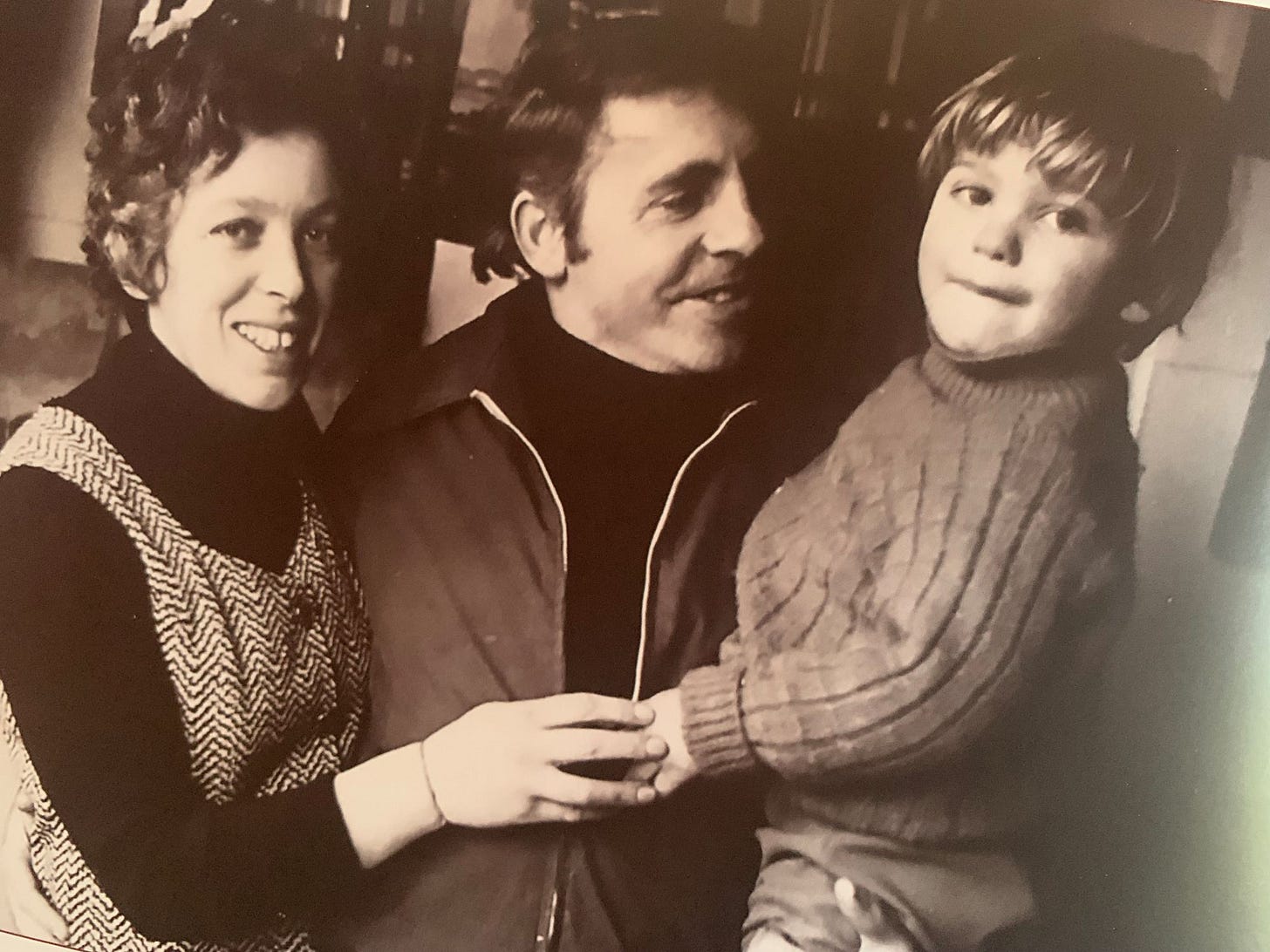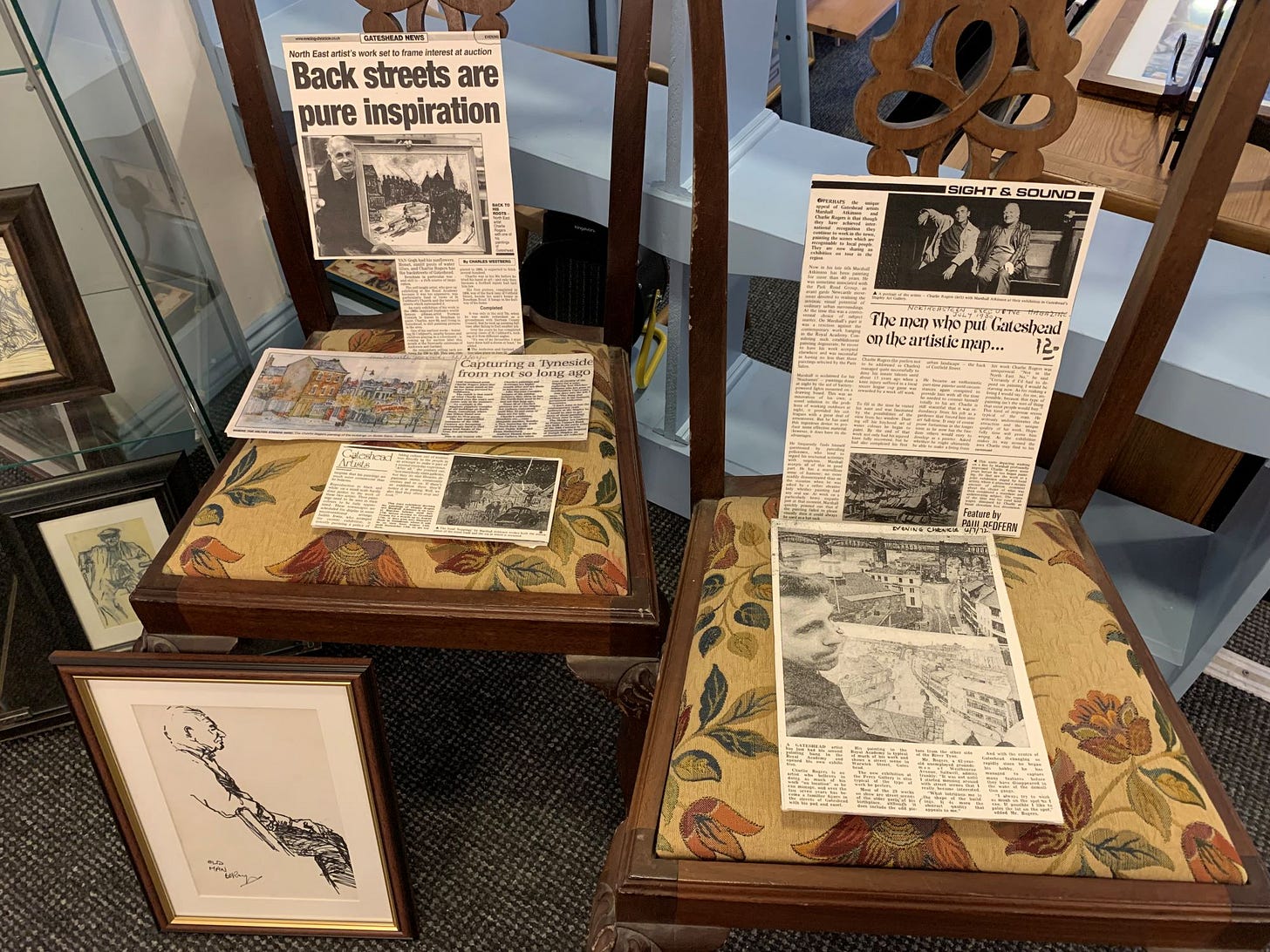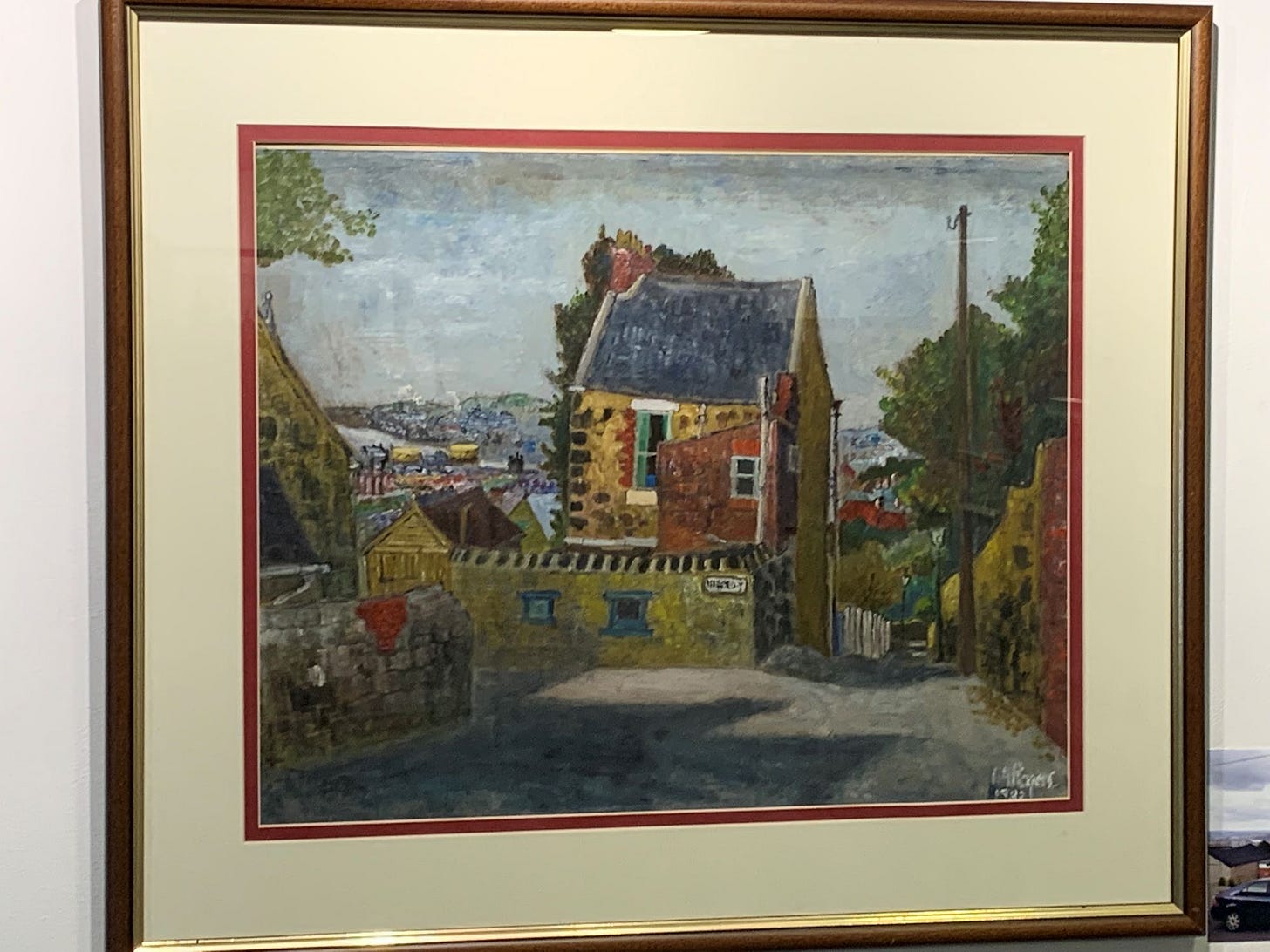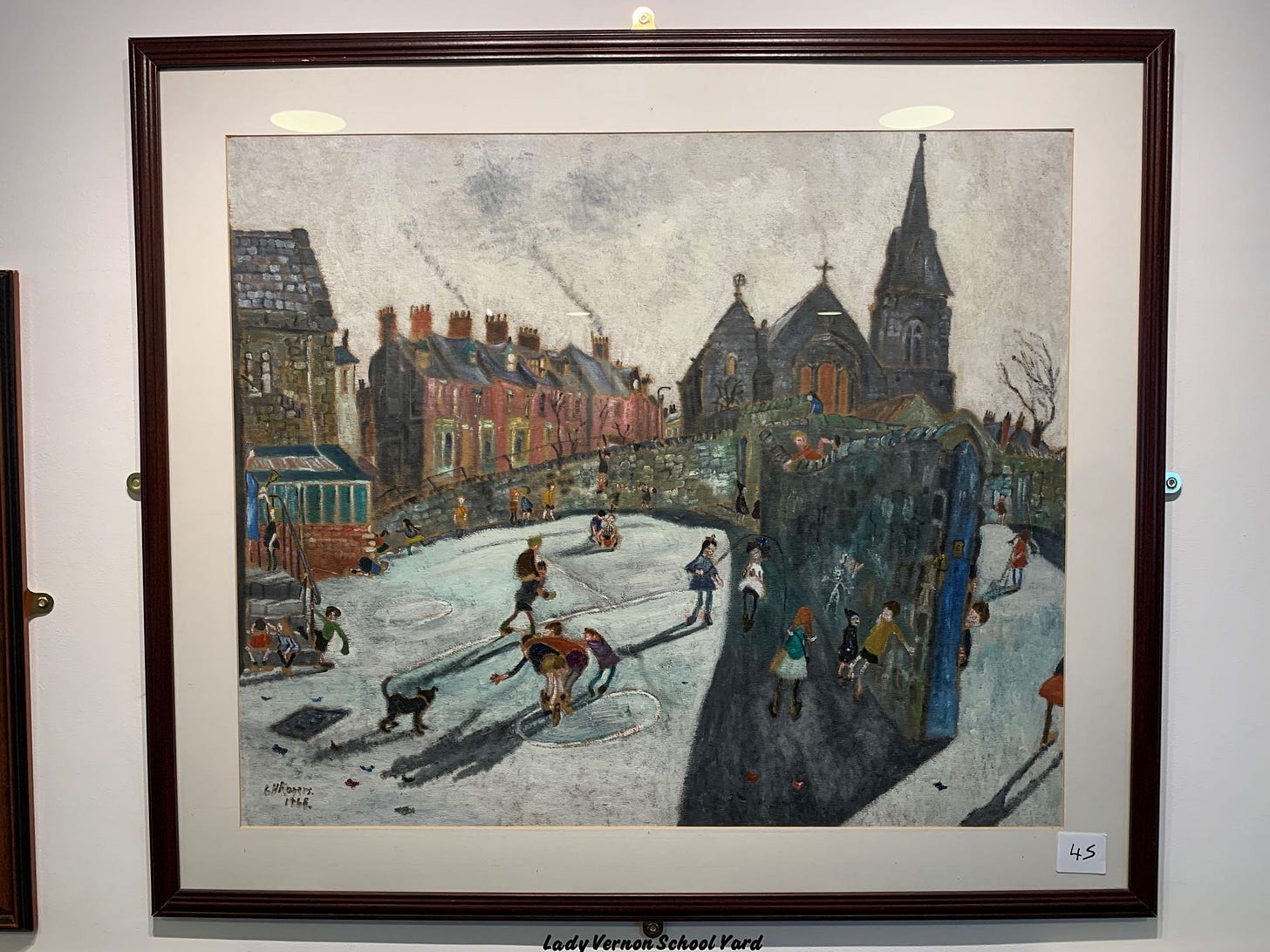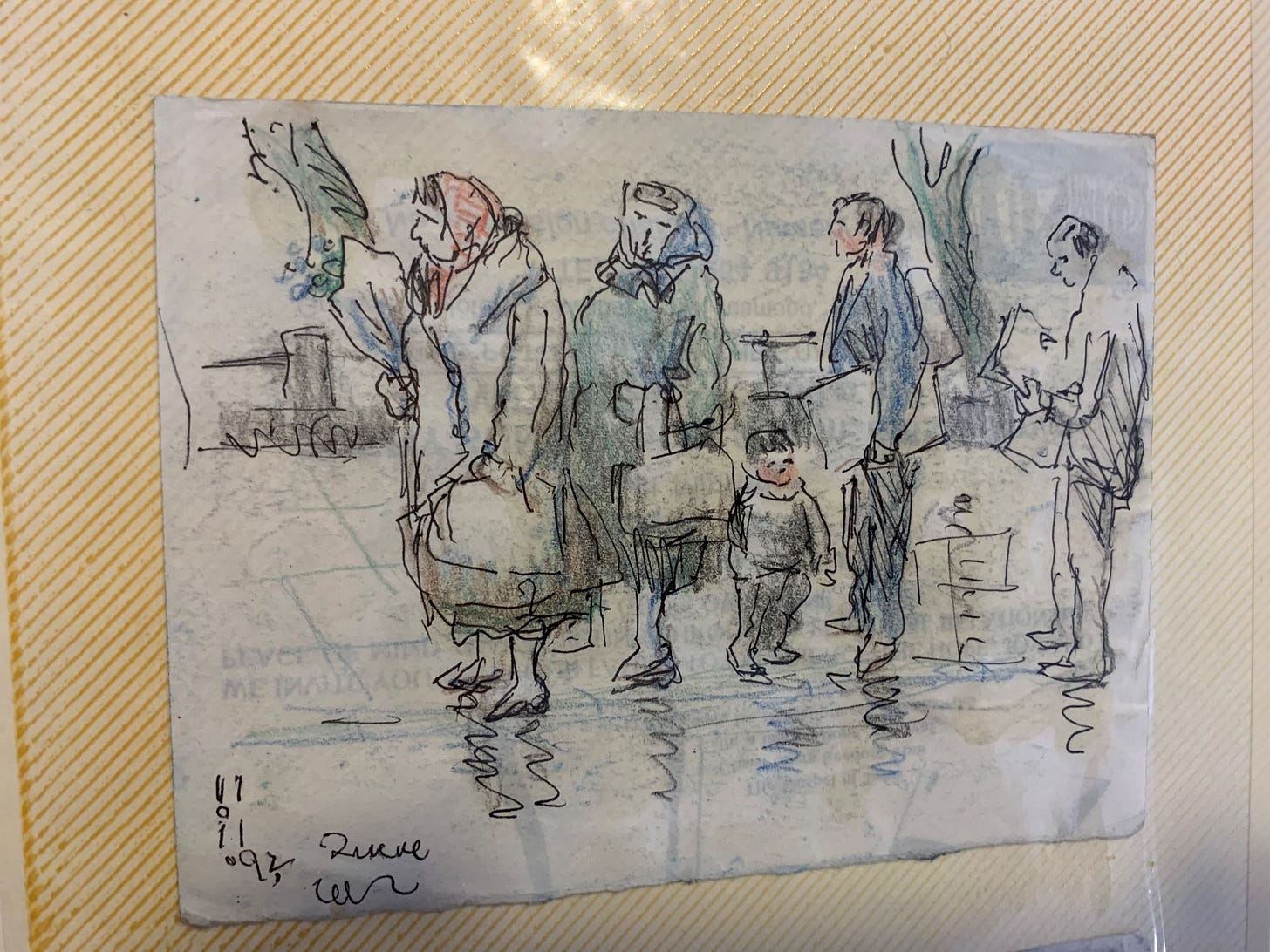Talent of Charlie Rogers recalled in book and exhibition
The Gateshead artist "pursued by bulldozers"
It’s “outrageous”, says Brian Rankin, that there’s only one painting by Charlie Rogers in the collection of Gateshead’s Shipley Art Gallery.
If he’s right about that, it’s an oversight that perhaps should be corrected – for Charlie, Gateshead to his core, is an artist on the up.
There’s an exhibition of his work opening on Saturday (July 12) in the gallery at Gateshead Central Library and Brian will be there, sitting at Charlie’s old table to sign copies of the handsome book he has compiled to tell his story.
It’s due to Brian that Charlie Rogers is back in the public eye where he rightly belongs.
For the last couple of years he has devoted much of his life to Charlie’s work, along with a large part of the art gallery in Low Fell that had previously been the family furniture business.
That business died in the pandemic, after which Brian, always interested in art, decided to do something different and opened the quirkily named Come View My Art Gallery.
He worked hard on the conversion and it wasn’t long, he recalls, before he started to hear one name. “Do you know about Charlie Rogers?” people would ask, poking their head round the door.
Writing about the arts, I did know a little about Charlie Rogers. I wrote the occasional newspaper story about him and would often see him on the streets of Gateshead or Newcastle.
That was where he spent a lot of his time so he wasn’t an unfamiliar sight, a man quietly sketching.
Brian discovered in 2023 that the pandemic had also claimed Charlie. He died in a care home in 2020, aged 90, having contracted Covid.
But when someone offered to introduce him to Charlie’s son, also called Charlie, Brian took it up, going along to the terrace house in Low Fell one Saturday morning and knocking on the door.
“I thought it was worth a try. I was expecting to see half a dozen paintings and then return to the gallery to get on with the decorating.
“That didn’t happen. I nearly fell through the floor when I walked into the house and saw what was there.
“Charlie junior – a nice man, just turned 50 and quite shy - guided me round, showed me where his dad had worked and the rooms dedicated to his work. Nothing had really changed.”
And there were so many pictures. Brian went back several more times, photographing and recording the paintings and sketches he saw; but the more he recorded, the more kept appearing, pulled out of cupboards or from under wardrobes.
Even now he refers to it as “an ongoing process”.
Just the other day, shortly before my visit to Brian’s gallery, Charlie junior had delivered more treasures.
Here were his father’s paintbrushes, his box of paints and the little red stamp with which he signed his watercolours ‘CHR’.
And there were more files of sketches that Brian hadn’t had time to look at. A cursory glance shows each to be full of mini-masterpieces, scenes of Saltwell Park, actors on stage at the Theatre Royal, people on the streets and deft little portraits.
There are sketches of Paris, too. Brian says Charlie went several times, walking and thumbing lifts whenever he could, just so he could mix with the artists of Montmartre.
He would also go to London occasionally to submit pictures to the Royal Academy Summer Exhibition. Brian says they were never refused.
“It’s a brilliant story,” says Brian, suddenly overwhelmed by its many angles and tangents. “It would make a fabulous film.”
The process of pulling it all together was greatly aided by the devotion of Charlie’s late wife, Ann, a librarian from Haltwhistle.
“She really was a fantastic supporter,” says Brian.
“She was like the admin. That’s what’s so wonderful about what’s in the house. It’s not just paintings and sketches, it’s all the documents. They were kept meticulously and they haven’t been touched.”
Brian was able to delve into the friendship between Charlie Rogers and Norman Cornish, the Spennymoor artist who is much better remembered and celebrated.
He says they would visit each other and go sketching together. He found paintings they had both done of Cotfield Street, in Gateshead. Norman had given his to Charlie as a present.
There’s a celebrated painting by Norman of the mobile chip van which is now at Beamish Museum. Charlie’s painting of the same chip van has been hanging in Brian’s gallery.
One picture bears the signatures of both men. It’s studies of women’s heads done in Norman’s local in Spennymoor. Each is named and Brian has learned that one of them, Jenny, was a familiar figure in Norman’s neighbourhood.
She was partial to black pudding and to a drink or several. After a marathon ‘session’, it was known for her to be pushed home in a wheelbarrow.
Brian acknowledges the help of the Cornish family, Norman’s son John, daughter Ann and son-in-law Mike Thornton, who were able to confirm the provenance of the pictures in Charlie’s possession.
There’s evidence, too, that Charlie, like Norman, was on more than nodding terms with LS Lowry, the celebrated artist who frequently visited the North East from across the Pennines.
For one thing, Charlie did a sketch of Lowry in Manchester, crossing the road.
Lowry had three exhibitions at the Stone Gallery that used to be at St Mary’s Place in Newcastle and Charlie and Norman went to see the last of them, in 1968, which was called simply Nine New Paintings.
Brian found a sketch by Norman of Charlie looking at one of the Lowry paintings – and he was intrigued to learn that Charlie exhibited 20 of his own paintings at Salford Museum & Art Gallery.
He laughs. “There’s no way Charlie Rogers would have gone to Salford, knocked on the door and said, ‘Here’s 20 paintings. Will you put them on the wall please?’
“Lowry had invited him down, obviously. We have the proof. That association takes things to another level and that’s one reason we’re so excited about this.
“Our journey begins on Saturday and I’ll be so interested to see where it goes from there.”
He hopes an application to the National Lottery Heritage Fund will be successful, enabling him to install proper heating and turn his place into a permanent Charlie Rogers gallery.
It’s the perfect location, he believes. “I’ve got lots of paintings here of buildings that are about five doors away from this gallery.
“I know that Charlie Rogers came up and down this bank, stood on the other side of the road, painted the church at the top and the pub at the bottom, so this location feels right.
“What I’m interested in most of all in this whole project is Charlie’s legacy.”
My guess is that newcomers to Charlie’s work will be entranced. Because so much of it has been out of sight, Brian has no qualms about calling this an unknown collection.
But for some, there is nothing unfamiliar about Charlie Rogers’ work.
Karolynne Hart, community arts and education manager at Gateshead Council, has been involved in setting up the exhibition and remembers previous Charlie Rogers exhibitions.
One lady in Tynemouth allowed Brian to see two of his paintings that she said were her pride and joy.
You can see why they would mean so much, being full of depth and atmosphere. Reluctant to part with them, she did allow Brian to make prints of them to show in his exhibition.
And if the paintings aren’t familiar, many of the scenes will strike a chord. Brian himself says: “I’m from Gateshead and I can see the back streets where I played as a kid with my bogey and my gang.
“We all played outside because there was nothing to do in the house. It’s my world and once I’d walked into that house the first time, I was hooked. I couldn’t walk away from that.”
His efforts have already been appreciated. He has given talks in primary schools, challenging the children to spot familiar landmarks in blown up versions of Charlie’s paintings.
And at the opposite end of the age scale, he remembers one elderly lady standing for so long in front of one painting that eventually he asked if she was all right.
“That’s my grandma’s washing,” she declared.
“I used to visit my grandma every weekend and that is definitely her washing.”
That’s the painting Brian chose for the cover of his book, Pursued By Bulldozers (Littlecroft Publishing), so named because Charlie once suggested he always felt he was one step ahead of the demolition men.
Brian will be in the gallery at Gateshead Central Library to sign copies of the book, which includes an essay by Michael Chaplin, from 10.30am to 12.30pm on Saturday (July 12).
The exhibition, also called Pursued by Bulldozers, runs until September 27 during library opening hours.




